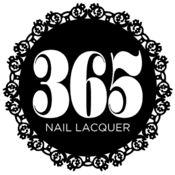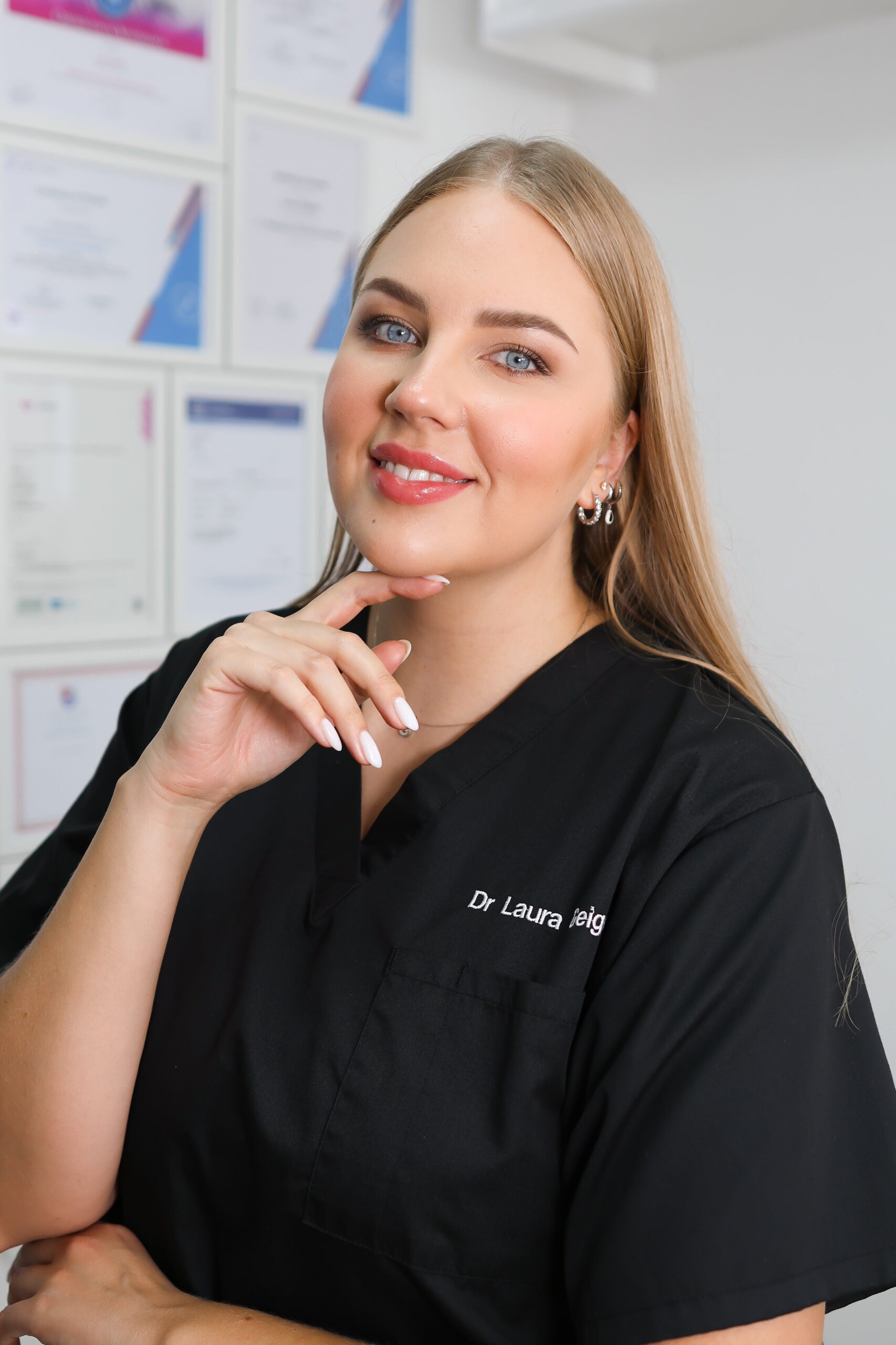
Redensity 1 Skin Booster Treatments Near Titsey, Surrey
Explore the Best Dermal Filler Treatments at It’s Me and You Clinic
What is Redensity 1?
Redensity 1 is a unique hyaluronic acid (HA) based solution developed specifically for skin boosting treatments.
Unlike traditional dermal fillers that are primarily used to plump and volumize specific areas, Redensity 1 is designed to rejuvenate the overall health and appearance of the skin.
Its formula contains a high concentration of low molecular weight HA, which allows it to deeply penetrate into the dermis, the middle layer of the skin.
This deep hydration stimulates collagen production, improves skin elasticity, and promotes a more even skin tone.
Redensity 1 also includes a unique cocktail of antioxidants, minerals, and amino acids that further enhance its revitalizing properties.
Antioxidants protect the skin from free radical damage, while minerals and amino acids contribute to cell regeneration and repair.
This comprehensive approach makes Redensity 1 an effective solution for addressing various signs of aging, such as fine lines, wrinkles, dryness, dullness, and loss of firmness.
It is particularly well-suited for individuals seeking a subtle yet noticeable improvement in their skin’s overall quality and radiance.
Find Out How Botox Can Enhance Your Appearance with Dr. Laura Geige
Redensity 1 is a hyaluronic acid-based injectable dermal filler specifically designed for skin rejuvenation and hydration. It is formulated with a unique blend of ingredients, including lidocaine for comfort during injections and antioxidants to protect the skin from environmental damage.
Unlike traditional fillers that primarily focus on adding volume, Redensity 1 works by replenishing the skin’s natural hyaluronic acid levels, which tend to decline with age. This leads to a smoother, plumper, and more hydrated complexion.
Redensity 1 can be administered via micro-injections throughout the face, targeting areas such as the cheeks, décolletage, hands, and lips. The treatment is suitable for a wide range of skin concerns, including:
- Fine lines and wrinkles
- Loss of facial volume and definition
- Dryness and dehydration
- Uneven skin texture
- Dull complexion
Benefits for Skin Health:
• **Improved Hydration:** Redensity 1’s hyaluronic acid molecules attract and retain moisture, leaving the skin feeling plumper and more supple.
• **Reduced Wrinkles and Fine Lines:** By plumping up the skin, Redensity 1 helps to minimize the appearance of fine lines and wrinkles.

• **Enhanced Skin Elasticity:** The treatment can stimulate collagen production, leading to improved skin elasticity and firmness.
• **Smoother Skin Texture:** Redensity 1 can even out skin texture by filling in uneven areas and minimizing the appearance of pores.
• **Brighter Complexion:** The increased hydration and plumpness of the skin contribute to a more radiant and youthful glow.
The results of Redensity 1 treatment are gradual and typically last for several months. Maintenance treatments may be required to prolong the effects.
Redensity 1 Treatments Near Titsey, Surrey
Redensity 1 is a popular dermal filler designed to improve skin hydration and elasticity. It’s often referred to as a “skin booster” because it aims to revitalize the complexion from within.
If you’re in or near Titsey, Surrey and considering Redensity 1 treatments, finding qualified professionals is crucial for achieving safe and effective results.
Here are some tips on how to locate reputable clinics and practitioners in your area:
1. **Online Research:** Start by searching online for “Redensity 1 treatments Titsey” or “dermal fillers near me.” Look for clinics that have websites showcasing their services, experienced practitioners, and client testimonials.
2. **Professional Organizations:** Check with professional bodies such as the British College of Aesthetic Medicine (BCAM) or the Association of aesthetic Practitioners (AAP). These organizations maintain registries of qualified practitioners who adhere to ethical standards.
3. **Recommendations:** Ask friends, family, or your GP for recommendations. Personal referrals can often lead you to trustworthy clinics.
4. **Consultations:** Schedule consultations with several practitioners before making a decision. This allows you to assess their expertise, experience with Redensity 1, and overall approach to patient care.

5. **Qualifications:** Ensure that the practitioner is qualified and experienced in administering dermal fillers. Look for certifications from reputable organizations and inquire about their training and experience with Redensity 1 specifically.
6. **Patient Reviews:** Read online reviews from previous patients to get an idea of their experiences with the clinic and the practitioner.
7. **Location and Facilities:** Consider the clinic’s location, hygiene standards, and overall environment. Choose a comfortable and professional setting.
By taking these steps, you can increase your chances of finding a qualified professional who can provide safe and effective Redensity 1 treatments in Titsey, Surrey.
Redensity 1 is a hyaluronic acid-based dermal filler designed for skin rejuvenation and hydration. It’s popular in areas like Titsey, Surrey, due to its ability to improve skin texture, plumpness, and overall radiance.
Expected Results:
Treatments can produce noticeable improvements in the following areas:
- Skin Texture:** Redensity 1 smooths fine lines, wrinkles, and rough patches, resulting in a more even and refined complexion.
- Hydration:** The hyaluronic acid attracts and retains moisture, leaving skin feeling plump, supple, and hydrated.
- Volume Enhancement: While not as volumizing as other fillers, Redensity 1 can subtly enhance facial contours and reduce the appearance of hollowing.
- Overall Radiance: Improved hydration and skin texture contribute to a brighter, more luminous complexion.
Longevity:**
Results typically last 6-9 months, although individual results may vary based on factors such as:
- Skin Type:
- Age:
- Lifestyle Habits (sun exposure, smoking, etc.):
- Number of Treatments Received:
Finding a Qualified Provider:
It’s crucial to choose a qualified and experienced practitioner for Redensity 1 treatments. Look for someone who is certified by a recognized medical board and has extensive experience with dermal fillers. Consultations are essential to discuss your goals, expectations, and any potential risks or side effects.
Potential Side Effects and Considerations
Redensity 1 is a hyaluronic acid-based dermal filler that’s gaining popularity for its skin revitalizing benefits. While it generally offers safe and effective results, like any medical procedure, there are potential side effects and considerations to be aware of before undergoing treatment.
Common Side Effects:
Most side effects associated with Redensity 1 are mild and temporary, typically resolving within a few days. These include:
Get in Touch with Dr. Laura Geige at It’s Me and You Clinic Without Delay
-
Redness or flushing at the injection sites
-
Swelling or bruising
-
Tenderness or pain
-
Small bumps or lumps that fade over time
Rare but More Serious Side Effects:
While uncommon, more serious side effects can occur. It’s crucial to consult with a qualified medical professional immediately if you experience any of the following:
-
Signs of infection, such as fever, redness, or pus
-
Severe swelling or pain that doesn’t improve
-
Numbness or tingling that lasts longer than a few days
-
Uneven skin texture or contour
Important Considerations:
Before opting for Redensity 1 treatment, consider the following:
-
Your Medical History: Certain medical conditions, such as autoimmune disorders or bleeding disorders, may increase the risk of complications.
-
Medications: Inform your doctor about all medications you’re taking, as some might interact with Redensity 1.
-
Realistic Expectations: While Redensity 1 can significantly improve skin hydration and texture, it won’t provide dramatic facial reconstruction.
-
Choosing a Qualified Practitioner: It’s essential to have the treatment administered by a licensed and experienced medical professional who understands the product and its potential risks.
Managing Risks:
Your doctor will discuss the risks and benefits of Redensity 1 in detail during your consultation. They can help you determine if it’s the right treatment for your needs and address any concerns you may have. By choosing a reputable clinic, following pre- and post-treatment instructions carefully, and being aware of potential side effects, you can minimize risks and maximize your chances of a successful and satisfying outcome.
Redensity 1 Skin Booster treatments utilize a hyaluronic acid-based solution to hydrate and revitalize the skin.
While generally considered safe, like any medical procedure, there are potential side effects and long-term considerations associated with Redensity 1 Skin Boosters.
Potential Side Effects:
Most side effects from Redensity 1 Skin Boosters are mild and temporary. These may include:
-
Redness, swelling, or bruising at the injection sites
-
Tenderness or discomfort in the treated area
-
Small bumps or nodules that typically resolve within a few days
These side effects usually subside within a few days to a week.
Serious Side Effects:
While rare, serious side effects can occur. These may include:
-
Infection at the injection site
-
Allergic reactions
-
Asymmetry or unevenness in the treated area
It is crucial to seek immediate medical attention if you experience any severe or persistent side effects.
Long-Term Impact on Skin:
Redensity 1 Skin Boosters are designed to provide temporary results. The hyaluronic acid gradually breaks down in the skin over time, typically lasting for several months. Repeated treatments can help maintain hydration and improve skin texture.
Considerations:
-
**Individual Results:** Outcomes may vary depending on factors such as skin type, lifestyle, and overall health.
-
**Sun Protection:** It is essential to wear sunscreen daily, even after Redensity 1 treatments, to protect the skin from UV damage.
-
Consultation with a Qualified Practitioner:** Before undergoing any aesthetic treatment, consult with a licensed and experienced medical professional to discuss your goals, expectations, and potential risks.
Fashionably Balanced Gifted Brits Made by Penny Gifted Brits Ayiti Natives Pinnacle Wellbeing Media
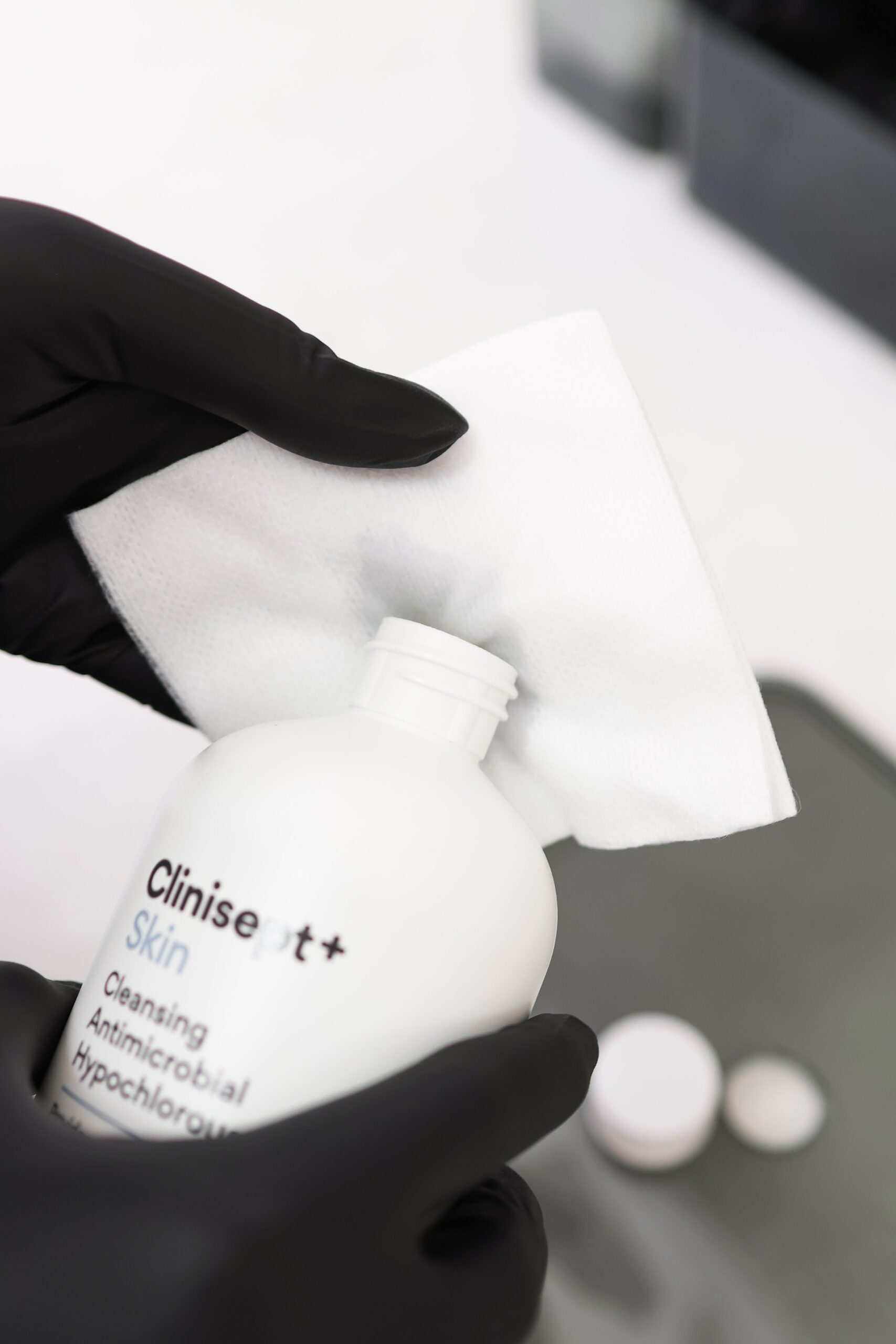
Gummy Smile Treatment – Gum Contouring Near Elstead, Surrey
Get the Facts on Dermal Fillers at It’s Me and You Clinic
What is Gummy Smile Treatment – Gum Contouring?
Gum Contouring: A Non-Surgical Solution
Gum contouring, also known as gum reshaping or gingival sculpting, is a non-surgical cosmetic dental treatment that aims to correct and reshape the appearance of your gums, thereby enhancing the overall smile aesthetic.

This treatment has gained popularity in recent years due to its effectiveness in addressing gummy smiles, where an excessive display of gum tissue can make the teeth appear smaller than usual. A gummy smile is often a result of various factors, including genetics, gums receding over time, or even facial muscle tension.
The process of gum contouring involves using advanced dental technology, such as lasers and precision instruments, to carefully reshape the gum tissue and create a more balanced proportion between your teeth and gums. This can help alleviate self-consciousness about the appearance of one’s smile, leading to increased confidence in both social and professional settings.
During the treatment process, your dentist may use various techniques, including:

- Laser gum recontouring**: A precise laser is used to remove excess gum tissue, revealing more of the tooth surface. This method promotes faster healing times and reduces bleeding risk.
- Soft tissue diode laser**: This technique uses a high-intensity light beam to carefully reshape the gums without damaging surrounding tissues.
The benefits of gum contouring include:
- Improved appearance of your teeth and overall smile aesthetic
- Increased confidence in social interactions due to enhanced smile awareness
- No surgical incisions or invasive procedures required
- Minimal downtime, allowing you to resume daily activities shortly after treatment
- No anesthesia or pain medication typically necessary
If you are considering gum contouring in the Elstead, Surrey area and want to know more about this non-surgical solution, consult a reputable dentist with expertise in cosmetic dentistry. They can assess your gums and provide personalized recommendations for achieving the smile of your dreams.
A gum contouring treatment can help correct a ‘gummy smile’ by reshaping the gum tissue.
Gum contouring is a dental treatment that helps to correct the appearance of a ‘gummy smile’ by reshaping the gum tissue.
A gummy smile is a cosmetic condition where the gums appear excessively prominent or show more than necessary when smiling, revealing an unnatural amount of gum tissue.
Causes of a gummy smile can include genetics, uneven or overgrown gum tissues, teeth that are too small for the mouth, or excessive gingival display due to other medical conditions such as hypothyroidism or certain medications.
Gum contouring is typically performed by a dentist who specializes in cosmetic dentistry and uses soft tissue laser technology to remove excess gum tissue, reshape and re-contour the gums.
The procedure usually takes place under local anesthesia to minimize any discomfort and often lasts between 30 minutes to an hour per treatment session.
Post-treatment care may include avoiding hard or sticky foods, taking over-the-counter pain relief medication as needed, and following a gentle brushing and flossing routine.
It’s essential to note that gum contouring is not meant to correct underlying bite issues but rather improves the appearance of the gums and smile.
Routine dental visits are recommended for optimal results, as the newly contoured gum tissue may take several weeks to settle and stabilize in its new position.
This nonsurgical approach is often preferred over surgical options due to its minimally invasive nature and faster recovery time.
A gummy smile can be a source of distress for many individuals, affecting their self-confidence and overall well-being.
Gum contouring, also known as gum recontouring or gingivectomy, is a nonsurgical approach used to treat a gummy smile by reshaping the gum tissue.
The procedure involves using specialized instruments to carefully trim and reshape the excess gum tissue, thereby creating a more aesthetically pleasing and balanced appearance between the teeth and gums.
This minimally invasive treatment is often preferred over surgical options due to its relatively pain-free nature and faster recovery time.
During the gum contouring procedure, local anesthesia may be administered to ensure patient comfort during the treatment.
The dentist or periodontist will use a specialized laser or surgical instrument to remove excess gum tissue, taking care to preserve healthy tissue.
The entire process typically takes only 30 minutes to an hour per tooth or area being treated, depending on the complexity of the case.
After the procedure, patients may experience mild discomfort, swelling, and bleeding, which can be managed with over-the-counter pain medication and ice packs.
It’s essential for patients to maintain good oral hygiene during the recovery period, including regular brushing and flossing.
The results of gum contouring are immediate and long-lasting, allowing individuals to enjoy a more confident smile.
Gum contouring is often used in conjunction with other dental treatments, such as veneers or bonding, to achieve optimal results.
Causes of Gummy Smile and Eligibility for Treatment
Understanding the Causes of a Gummy Smile
A gummy smile, also known as a prominent gingival display, occurs when an excessive amount of gum tissue shows when smiling, giving the appearance of buck teeth or a “gummy” look.
The causes of a gummy smile can be attributed to various factors:
-
Genetics: In some cases, a gummy smile may be inherited from one’s parents.
-
Dental work: Dental procedures such as crown lengthening or tooth extractions can lead to an uneven gum line, causing a gummy smile.
-
Overcrowding: Teeth overcrowding can cause the gum tissue to be pushed forward, resulting in a gummy smile.
-
Gum recession: Gum recession exposes more of the tooth and bone structure, making the gums appear more prominent.
-
Abnormal jaw alignment: Misalignment of the upper or lower jaw can cause the gum tissue to be exposed when smiling.
In order to determine eligibility for treatment, a dentist will typically conduct an examination and take x-rays of the teeth and surrounding bone structure.
The following factors are considered when assessing eligibility for gum contouring:
-
See How Dr. Laura Geige’s Botox Treatments Can Help You
-
Severity of the gummy smile: The degree to which the gum tissue is visible when smiling determines the extent of treatment required.
-
Overall oral health: A patient’s overall oral health, including the presence of any dental issues or medical conditions that may impact treatment outcomes.
-
Desired outcome: The patient’s goals for their gummy smile correction will influence the type and extent of treatment recommended.
Gum contouring is generally recommended for individuals who have a mild to moderate case of a gummy smile and are in good oral health.
A ‘gummy smile’ can be caused by an excess of gum tissue, teeth that appear too small, or gum recession.
A gummy smile, also known as an excess gingival display, can be caused by various factors. Some common causes include:
-
An overgrowth or excess of gum tissue, which can cause the gums to appear too prominent when smiling
-
Teeth that are smaller than average, making them appear more crowded and contributing to a gummy smile appearance
-
Gum recession, also known as periodontal disease, which can cause the gums to pull back from the teeth, exposing roots and creating a gummy smile effect
-
Orthodontic or tooth movement issues, such as overbite or underbite, that can lead to uneven teeth alignment and contribute to a gummy smile appearance
-
Habits such as nail biting or tongue thrusting, which can cause the upper lip to rise higher than normal when smiling, leading to excess gingival display
To be eligible for gum contouring treatment, a patient typically must meet certain criteria:
-
Be in good overall health with no underlying medical conditions that could compromise healing or surgical outcomes
-
Haven’t smoked tobacco products for at least three months prior to the procedure and be willing to quit smoking altogether
-
Have realistic expectations about the outcome of gum contouring treatment and understand that it is a surgical procedure that requires some recovery time
-
Be willing and able to follow post-operative instructions carefully, including maintaining good oral hygiene practices and attending follow-up appointments with their dentist or periodontist
At our dental practice near Elstead in Surrey, we will assess each patient’s individual needs and determine the most suitable treatment options for their gummy smile. We use advanced techniques and technology to ensure optimal results and minimize discomfort during and after treatment.
According to the American Dental Association (ADA), gum contouring is typically suitable for individuals with healthy gums and teeth.
A gummy smile can be caused by a variety of factors, including gum hypertrophy, which is an excessive growth of gum tissue over the teeth.
Other possible causes include:
-
Muscle hyperactivity, which can cause the upper lip to rise too high when smiling
-
Dental malposition or misalignment, where the teeth are not properly aligned with the gum tissue
-
Genetics, as some people may inherit a tendency for their gums to grow more quickly than average
-
Medical conditions such as hypothyroidism or certain medications that can cause an increase in gum growth
The American Dental Association (ADA) states that gum contouring is typically suitable for individuals with healthy gums and teeth, who are looking to correct a gummy smile.
Eligibility for treatment may also depend on the underlying cause of the gummy smile, as well as any other dental or medical conditions that may be present.
In general, gum contouring is most effective in individuals with:
-
A relatively small amount of excess gum tissue
-
No significant dental malpositions or misalignment
-
No underlying medical conditions that may affect the gums or teeth
It’s essential to consult a qualified dentist, such as one near Elstead, Surrey, for a thorough evaluation and personalized advice on whether gum contouring is suitable for your specific case.
Gum Contouring Procedure near Elstead, Surrey
What to Expect from the Gum Contouring Procedure
Gum contouring is a non-surgical dental procedure designed to reshape and recontour the gum tissue surrounding your teeth, thereby improving the overall aesthetic appearance of your smile.
The goal of gum contouring is to enhance the proportion and balance of your gums to teeth ratio, creating a more pleasing and harmonious smile. This procedure can address various concerns such as:
-
Exposure of too much gum tissue when smiling
-
Gum recession or exposed roots of the teeth
-
Asymmetry in gum levels, creating an uneven smile
-
Shortened facial profile due to excessive gum tissue
Before undergoing a gum contouring procedure near Elstead, Surrey, you can expect the following steps:
-
Scheduling a consultation with your dentist: Discuss your concerns and desired outcomes for the treatment. Your dentist will examine your teeth and gums to determine if gum contouring is suitable for you.
-
Pre-procedure preparation: Your dentist may take impressions or photographs of your smile, as well as x-rays to evaluate the health of your jawbone and surrounding tissues.
The actual procedure typically involves the following steps:
-
Anesthesia: You will receive local anesthesia to numb the area around your gums. This ensures you remain comfortable throughout the treatment.
-
Gum tissue reshaping: Using a specialized instrument, your dentist carefully removes excess gum tissue, creating a more even and balanced profile.
-
Cleaning and polishing: Once the desired shape has been achieved, your gums will be cleaned and polished to remove any remaining bacteria or debris.
After the procedure, you can expect some swelling, redness, and soreness around the treated area. These symptoms typically subside within a few days. It’s essential to follow your dentist’s post-procedure instructions carefully to ensure proper healing and minimize any potential complications.
The results of gum contouring are usually immediate, but it may take some time for the swelling to completely resolve. A follow-up appointment with your dentist will allow you to discuss any concerns or adjust any final details to achieve a more pleasing smile.
The procedure may involve laser or surgical techniques to reshape the gum tissue, depending on individual needs and preferences.
Gum contouring is a cosmetic procedure designed to reshape and redefine the appearance of the gum line, often to address concerns about a “gummy” smile.
The goal of gum contouring is to create a more balanced and aesthetically pleasing relationship between the teeth and gums, thereby enhancing the overall appearance of the smile.
There are several reasons why individuals may consider undergoing gum contouring near Elstead, Surrey:
- Gummy smile caused by excessive gum tissue
- Uneven or asymmetrical gum line
- Recessed gums exposing roots of teeth
- Crooked or overlapping teeth making the gum line appear uneven
The procedure may involve laser or surgical techniques to reshape the gum tissue, depending on individual needs and preferences.
Some common methods used in gum contouring include:
- Laser gum surgery: uses a high-precision laser to carefully remove excess gum tissue
- Surgical gum recontouring: involves making small incisions to access and reshape the gum tissue
- Tissue grafts or flaps: can be used to cover exposed roots or areas of receded gums
Connect with Dr. Laura Geige at It’s Me and You Clinic
The specific technique chosen will depend on factors such as:
- Severity and complexity of the gum issue
- Patient’s overall health and medical history
- Desired level of precision and accuracy
- Personal preferences regarding downtime, recovery time, and potential risks
Recovery from gum contouring typically ranges from a few days to several weeks, with some swelling, bruising, and discomfort expected during this period.
It is essential to follow post-operative instructions carefully to ensure optimal healing and minimize complications. Regular follow-up appointments are also crucial for monitoring progress and adjusting treatment as needed.
In the hands of a skilled and experienced dental professional near Elstead, Surrey, gum contouring can be a highly effective way to create a more balanced, healthy-looking smile that boosts confidence and self-esteem.
Following treatment, patients are advised to maintain good oral hygiene practices to ensure optimal results, as recommended by the British Dental Association (BDA).
Gum contouring is a cosmetic dental procedure designed to reshape and recontour the gum line, enhancing the overall appearance of the teeth and smile.
This treatment is typically recommended for individuals who have a ‘gummy smile’, where a significant amount of gum tissue shows when smiling, making the teeth appear shorter than usual.
At our dental practice near Elstead, Surrey, our experienced dentists use state-of-the-art techniques to carefully recontour and reshape the gum line, resulting in a more balanced and aesthetically pleasing smile.
The gum contouring procedure typically involves numbing the area with local anesthesia to minimize any discomfort during the treatment.
Once numb, the dentist will use specialized tools to gently reshape the gum tissue and recontour the gum line to achieve the desired appearance.
The entire process usually takes around 30-60 minutes per tooth, depending on the complexity of the case and the number of teeth being treated.
After the treatment, patients are advised to maintain good oral hygiene practices, such as regular brushing and flossing, to ensure optimal results. This is in line with recommendations made by the British Dental Association (BDA).
By following these simple care instructions, patients can help prevent the gum tissue from growing back over time, thereby maintaining their newly contoured smile.
It’s essential for individuals considering gum contouring to schedule a consultation with our dentists near Elstead, Surrey, to determine if this treatment is suitable for them and to discuss any specific concerns they may have.
This will allow us to assess the individual’s teeth and gums in more detail and provide personalized guidance on the best course of action to achieve their desired smile results.
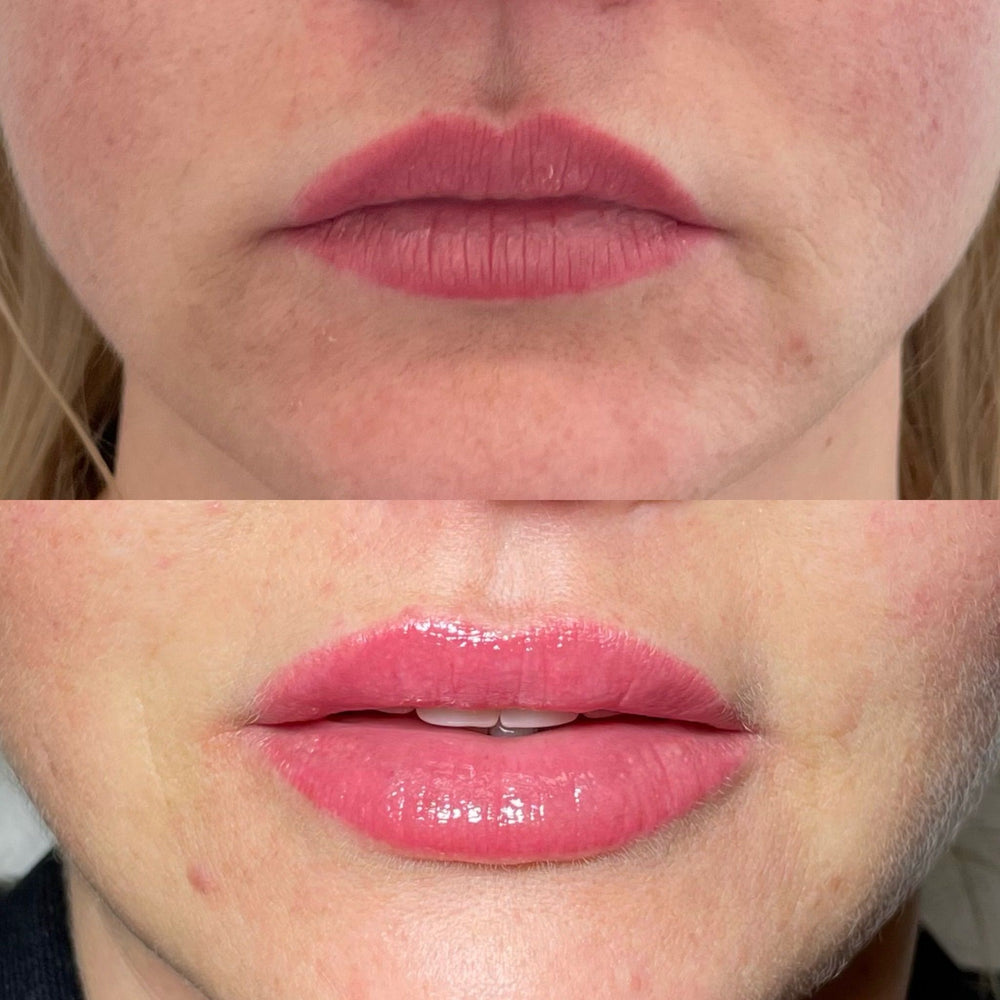
Does Botox In A Bottle Really Work?
Schedule a Dermal Filler Appointment with Dr. Laura Geige
## What is Botox “in a bottle”?
“Botox in a bottle” generally refers to over-the-counter (OTC) skincare products that claim to mimic the effects of botulinum toxin, the active ingredient in Botox injections.
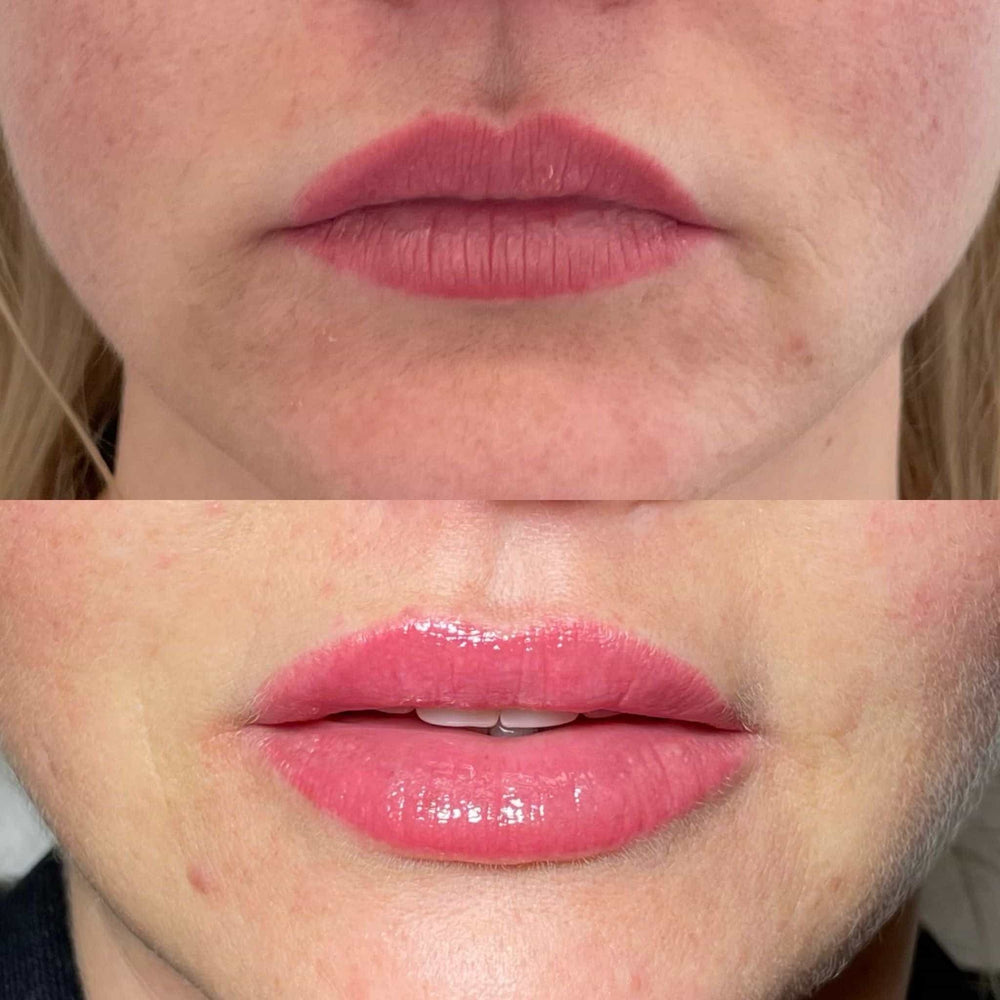
These products often contain ingredients like peptides, amino acids, or plant extracts that are purported to temporarily relax facial muscles and reduce the appearance of wrinkles. Some popular examples include serums, creams, and sheet masks marketed with names like “Botox in a bottle,” “natural Botox,” or “facelift in a jar.”
The effectiveness of these products is often debated. While some users report noticeable results, scientific evidence to support their claims is limited.
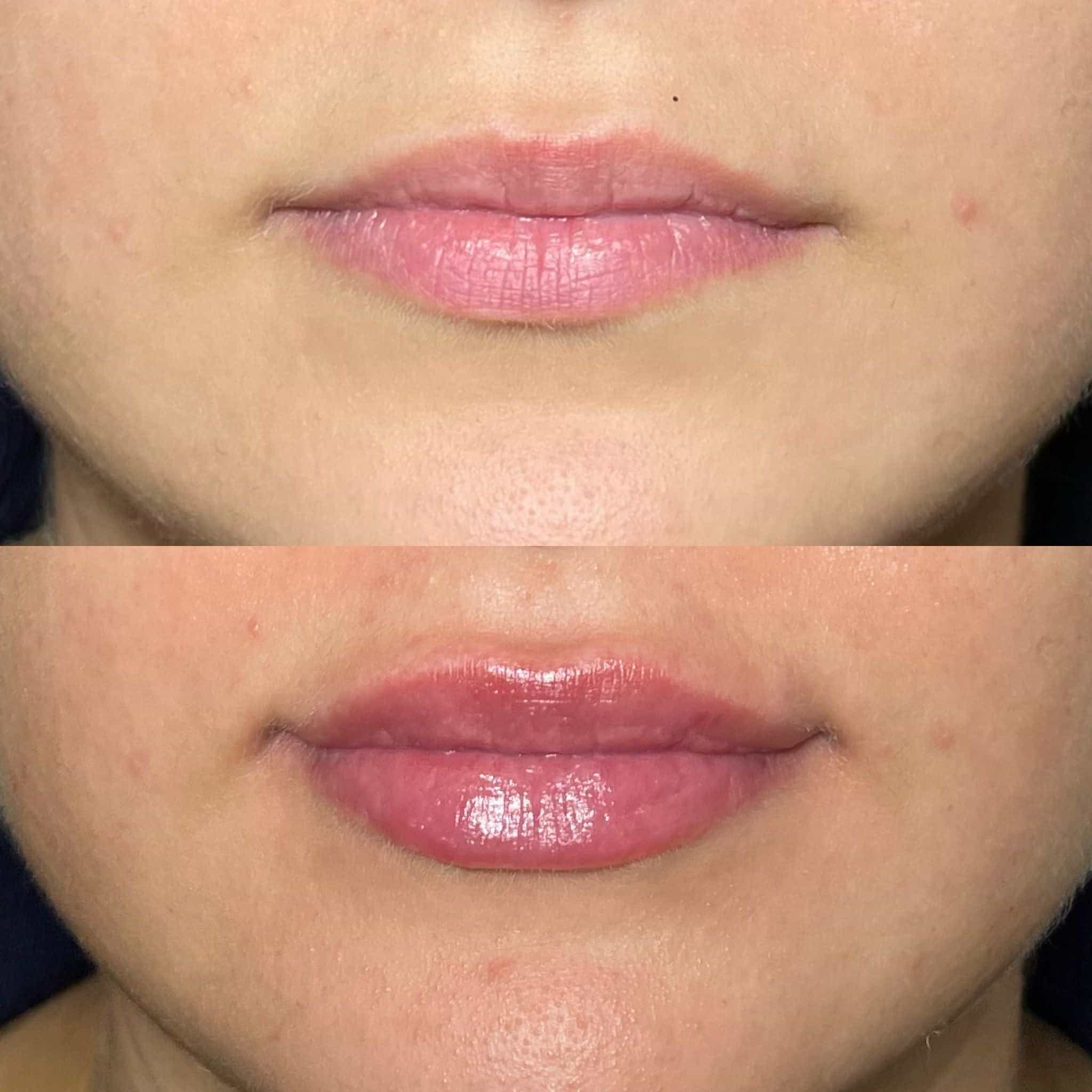
Unlike Botox injections, which involve injecting botulinum toxin directly into muscles, OTC “Botox in a bottle” products work topically. This means the active ingredients need to penetrate the skin and reach the muscle fibers to have any effect.
The concentration and formulation of these ingredients in OTC products are often significantly lower compared to Botox injections, which may explain why their effects are less pronounced and temporary.
Furthermore, the penetration ability of these ingredients into deeper skin layers is questionable. While some peptides can penetrate the skin to a certain extent, reaching the muscle layer where wrinkles originate might be challenging.
It’s important to note that “Botox in a bottle” products are not a replacement for Botox injections.
At-Home Alternatives The Science Behind Botox
## How Does It Supposedly Work?
Botox, a brand name for botulinum toxin type A, is renowned for its wrinkle-smoothing effects. It works by temporarily paralyzing muscles, preventing them from contracting and causing wrinkles to form.
When injected into the skin, Botox targets nerve endings that signal muscles to contract. The toxin blocks the release of acetylcholine, a neurotransmitter crucial for muscle movement. This disruption in communication between nerves and muscles results in muscle paralysis.
The paralyzed muscles relax, leading to a smoothing effect on the overlying skin. This is particularly effective in treating dynamic wrinkles, which are caused by repeated facial expressions like frowning or squinting.
While Botox’s effectiveness is well-documented, it’s important to note that its effects are temporary. The paralysis wears off as new nerve connections are formed, typically lasting between 3 and 6 months. Repeat injections are necessary to maintain the wrinkle-free results.
Book Your Dermal Filler Consultation with Dr. Laura Geige at It’s Me and You Clinic
Mimicking Facial Exercises? Ingredient Claims: Fact or Fiction?
The Verdict: Does it Actually Deliver?
The allure of achieving smoother, youthful skin without resorting to expensive injections has fueled a surge in popularity for “Botox in a bottle” products. These creams and serums often boast ingredient claims that promise to mimic the effects of Botox by relaxing facial muscles and reducing wrinkles.
One key ingredient commonly found in these products is Argireline, also known as acetyl hexapeptide-3. This peptide is touted for its ability to temporarily reduce muscle contractions, similar to how Botox works. However, it’s important to note that Argireline doesn’t possess the same potent paralyzing effects as botulinum toxin (the active ingredient in Botox). Its mechanism involves blocking nerve impulses from reaching muscles, leading to a subtle relaxation effect.
Another ingredient often featured is Matrixyl or Palmitoyl Pentapeptide-4. This peptide aims to stimulate collagen production and improve skin elasticity, contributing to a plumper and smoother appearance. While there’s evidence suggesting that Matrixyl can indeed boost collagen synthesis, the results are generally subtle and may take several weeks or months to become noticeable.
Other ingredients commonly found in these products include hyaluronic acid for hydration, peptides that promote cell turnover, and antioxidants to protect skin from environmental damage. While these ingredients offer various benefits for skin health, their ability to significantly mimic the effects of Botox is debatable.
The verdict on “Botox in a bottle” products remains mixed. While some users report noticing a slight reduction in fine lines and wrinkles after using these creams and serums consistently, the results are often temporary and less dramatic compared to Botox injections.
Ultimately, if you’re seeking significant wrinkle reduction or muscle paralysis, Botox injections remain the most effective option. However, for those looking for a gentler approach with minimal downtime and potential side effects, these creams and serums may offer some improvement in skin texture and appearance.
Get Started with Your Dermal Filler Consultation with Dr. Laura Geige
Scientific Evidence vs. Anecdotal Claims
Potential Risks and Considerations
The New Cinema Magazine Lace and Scotch Audrey’s JL The New Cinema Magazine
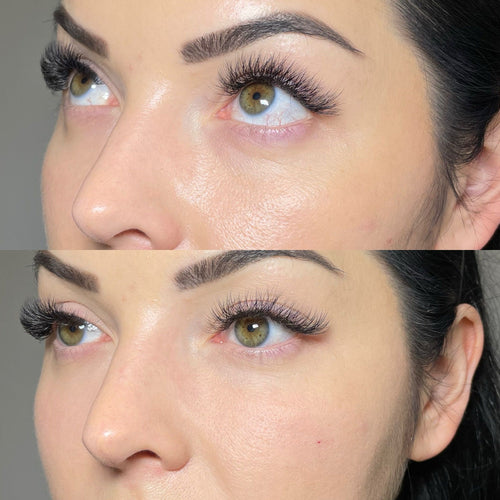
Where Do You Inject Botox For Smokers Lines?
Schedule a Dermal Filler Session with Dr. Laura Geige Now
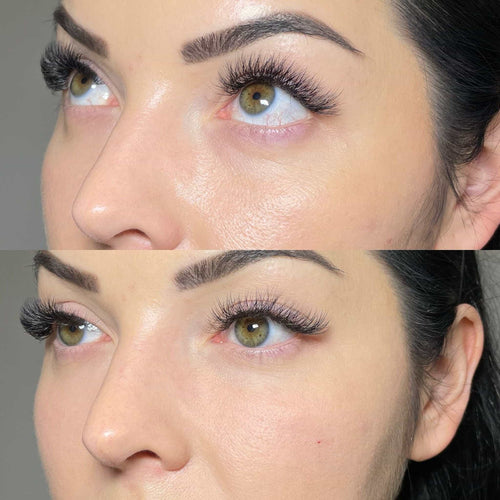
Botox Placement for Smoker’s Lines
Understanding Smoker’s Lines
Smoker’s lines, also known as perioral lines, are vertical wrinkles that appear around the mouth. They develop due to repeated muscle contractions from smoking, drinking through a straw, or even making facial expressions.
These lines often start as subtle creases, but with time, they deepen and become more pronounced, contributing to an aged appearance.
Understanding Botox Placement for Smoker’s Lines
Botox injections are a popular treatment for reducing the appearance of smoker’s lines. The effectiveness of this treatment lies in strategically injecting the botulinum toxin into specific muscles that contribute to wrinkle formation.
The primary muscle targeted for Botox in treating smoker’s lines is the *orbicularis oris* muscle. This muscle surrounds the mouth and is responsible for puckering, kissing, and other facial expressions that create those vertical lines.
Injection Points
-
Book a Consultation for Dermal Fillers with Dr. Laura Geige Today
-
Superficial Layer:** The first layer of injection targets the superficial part of the orbicularis oris muscle. This involves injecting Botox in a line along each side of the mouth, parallel to the existing wrinkles.
-
Deep Layer: For more significant wrinkles, deeper injections into the deeper layers of the orbicularis oris muscle may be required. These injections are made perpendicular to the initial ones, further relaxing the muscle and smoothing out the lines.
Number of Units Used:
The amount of Botox used depends on the severity of the smoker’s lines and individual factors. Typically, a small amount of Botox is injected into each point, starting with less and gradually increasing until desired results are achieved.
Note: The exact placement and technique can vary depending on the patient’s anatomy and the specific needs of their case. It’s important to consult with a qualified and experienced injector for personalized treatment.
Targeting the Vertical Furrows
Smoker’s lines, also known as vertical lip wrinkles or rhytids, are those deep furrows that develop vertically above the upper lip. They appear due to repeated muscle contractions from smoking or puckering motions.
Botox effectively targets these lines by relaxing the muscles responsible for their formation. The injection points for Botox in smoker’s lines typically focus on the “levator labii superioris” and sometimes the “zygomaticus major” muscles.
The “levator labii superioris” muscle elevates the upper lip. It’s crucial to target the lower portion of this muscle, directly above the philtrum (the vertical groove between your nose and upper lip).
Injecting into the levator labii superioris effectively reduces its ability to contract, thereby smoothing out those vertical lines.
Sometimes, a small amount of Botox may be strategically placed in the “zygomaticus major” muscle as well. This muscle assists with smiling and can contribute to the deepening of smoker’s lines when contracted repeatedly.
It is important to note that Botox placement for smoker’s lines requires precise technique and an understanding of facial anatomy.
Consulting a qualified and experienced injector is essential to ensure safe and effective treatment.
Beyond Botox: Other Treatment Options
Dermal Fillers
Botox, while effective for reducing the appearance of wrinkles caused by dynamic muscle contractions, isn’t the only solution for smoker’s lines (also known as perioral rhytides). These fine lines around the mouth often stem from repetitive movements like smiling, frowning, and smoking.
Dermal fillers offer an alternative approach to smoothing out these wrinkles. Fillers are gel-like substances, typically composed of hyaluronic acid, which is naturally found in the skin. They work by plumping up the skin, effectively filling in the grooves caused by smoker’s lines.
Injections for smoker’s lines often target specific areas around the mouth:
-
Vertical lip lines: Filler injections along these lines can restore volume and create a smoother appearance.
-
Smoker’s lines extending to the corners of the mouth: Fillers here can soften the lines and enhance the fullness of the lower face.
The choice between Botox and dermal fillers for smoker’s lines depends on individual needs and preferences.
Here’s a breakdown:
-
**Botox:** Best for preventing the formation of new wrinkles by temporarily paralyzing the muscles that cause movement.
-
**Dermal fillers:** Ideal for filling in existing wrinkles and restoring volume, providing a more immediate smoothing effect.
In some cases, combining Botox and dermal fillers can achieve optimal results. Botox can relax the muscles that contribute to wrinkle formation, while fillers plump up the skin, creating a smoother, more youthful appearance.
Arrange a Consultation for Dermal Fillers with Dr. Laura Geige at It’s Me and You Clinic
Laser Treatments
Smokers’ lines, also known as perioral rhytides, are wrinkles that appear around the mouth due to repetitive muscle movements from smoking and expressions like smiling. While Botox injections are commonly used to treat these lines, there are other effective treatment options available.
Here are some alternatives to Botox for smokers’ lines:
-
Dermal Fillers:
Hyaluronic acid fillers can be injected into the lines to plump up the skin and reduce their appearance. They provide immediate results that can last for several months.
-
Chemical Peels:
Superficial chemical peels can exfoliate the top layer of skin, reducing the appearance of fine lines and wrinkles. Multiple treatments may be necessary to achieve optimal results.
-
Microneedling:
This procedure involves creating tiny punctures in the skin with a device containing fine needles. This stimulates collagen production, improving skin texture and reducing the depth of wrinkles.
-
Laser Resurfacing:
Ablative laser treatments remove the outer layer of damaged skin, revealing smoother, younger-looking skin underneath. This option is best for moderate to severe smokers’ lines.
Laser Treatments Specifically for Smokers’ Lines
-
Fractional Laser:
This type of laser creates microscopic columns of ablative injury in the skin, stimulating collagen production and improving texture. It is effective for treating wrinkles, including those around the mouth.
-
Intense Pulsed Light (IPL):
IPL therapy targets pigmented areas and stimulates collagen production, improving the appearance of fine lines and uneven skin tone.
Choosing the right treatment depends on factors such as the severity of your smokers’ lines, your skin type, and your desired results. A dermatologist can help you determine which option is best for you.
Otherwheres Magazine Emily Patricia Fae Elizabeth Rohrbaugh Pinnacle Wellbeing Media Lace and Scotch
